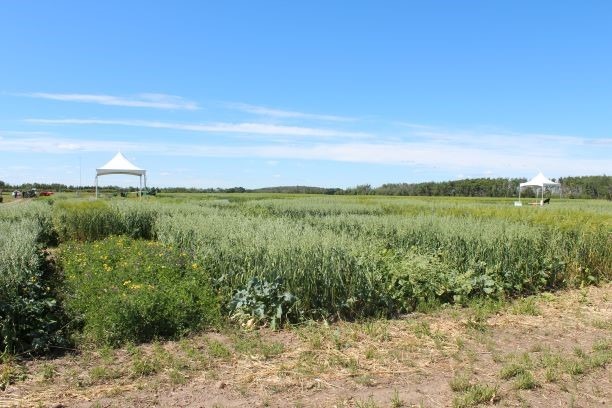Akim Omokanye, Guillermo Hernandez, Herbert Lardner, Kabal S. Gill, Buthaina Al-Maqtari & Alan Lee
Summary
Winter feeding costs could account for more than two-thirds of the total feeding and management expenses for beef cow-calf production in western Canada’s cool season climates. Balancing the animal’s nutrient needs with forage resource’s nutritional opportunities leads to sustainable beef cattle management by reducing winter feed supplementation requirements. This investigation compared forage yield and nutritional value of annual forage-type cool and warm-season crops for the beef diet. It compared two cool-season (C3,.i.e. CDC Haymaker oat and CDC barley) and ten warm-season (C4, i.e. Siberian red foxtail millet, Golden German foxtail millet, Japanese foxtail millet, Pearl millet, White proso crown millet, Red proso crown millet, Forage sorghum hybrid, Sorghum Sudangrass variety BMR, Sorghum Sudangrass variety Grazex III, and Teff) forages. In 2017 and 2018, near Fairview (56° 04’ 53 N, 118° 26’ 05 W; 670 m) in northwestern Alberta, Canada, we conducted field experiments.
Forage yield was higher for the two cool-season crops (C3), but the warm-season crops (C4) generally had higher crude protein (CP) and total digestible nutrient (TDN) values. The warm-season (C4) crops also had higher Ca, P, K, Mg, Fe, and Zn. Both cool-season (C3) and warm-season (C4) crops met the CP and minerals requirements for dry gestating beef cattle, and all the crops met the TDN requirements of dry and pregnant cows. Barley and seven of the ten warm-season crops also met the TDN required by lactating cows. The warm-season crops (C4) exceeded protein requirements, reducing the need for protein supplementation during winter feeding.
Based on the ease of establishment and forage yield, only four of the ten warm-season crops (two crown millet varieties (red and white proso millets) and two sorghum Sudangrass varieties (BMR and Grazex III)] would be a fit for swath grazing or pasture.
Read the full report:
• Journal of Crop Improvement (https://doi.org/10.1080/15427528.2020.1847226)
• SARDA Ag Research Documents https://drive.google.com/file/d/1R4P3M33RoNbn7_D9khDIvTeYzVyx7fl3/view?usp=sharingdrive.google.com/file/d/1R4P3M33RoNbn7_D9khDIvTeYzVyx7fl3/view?usp=sharing

